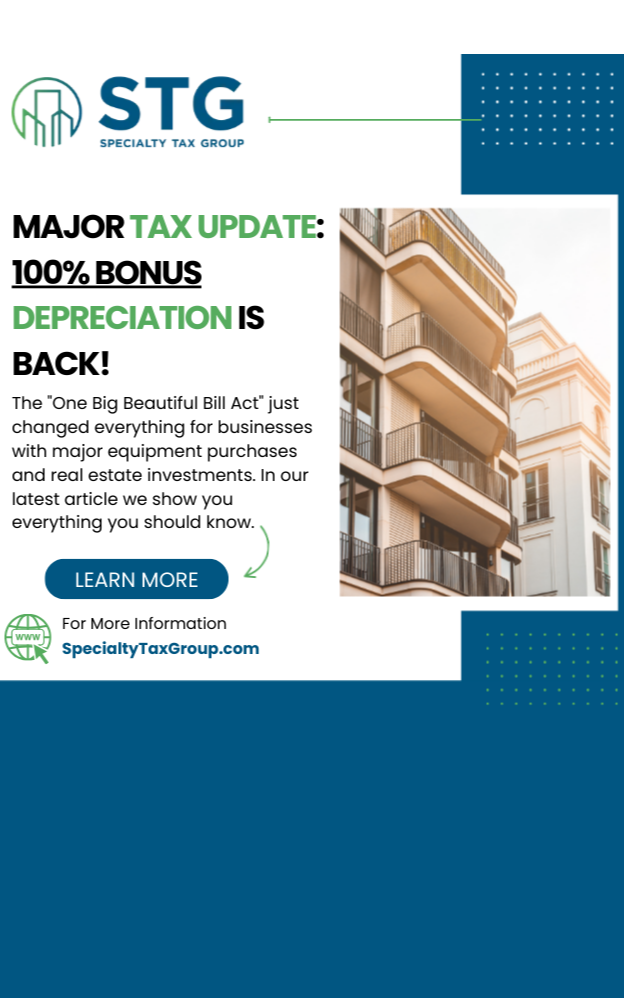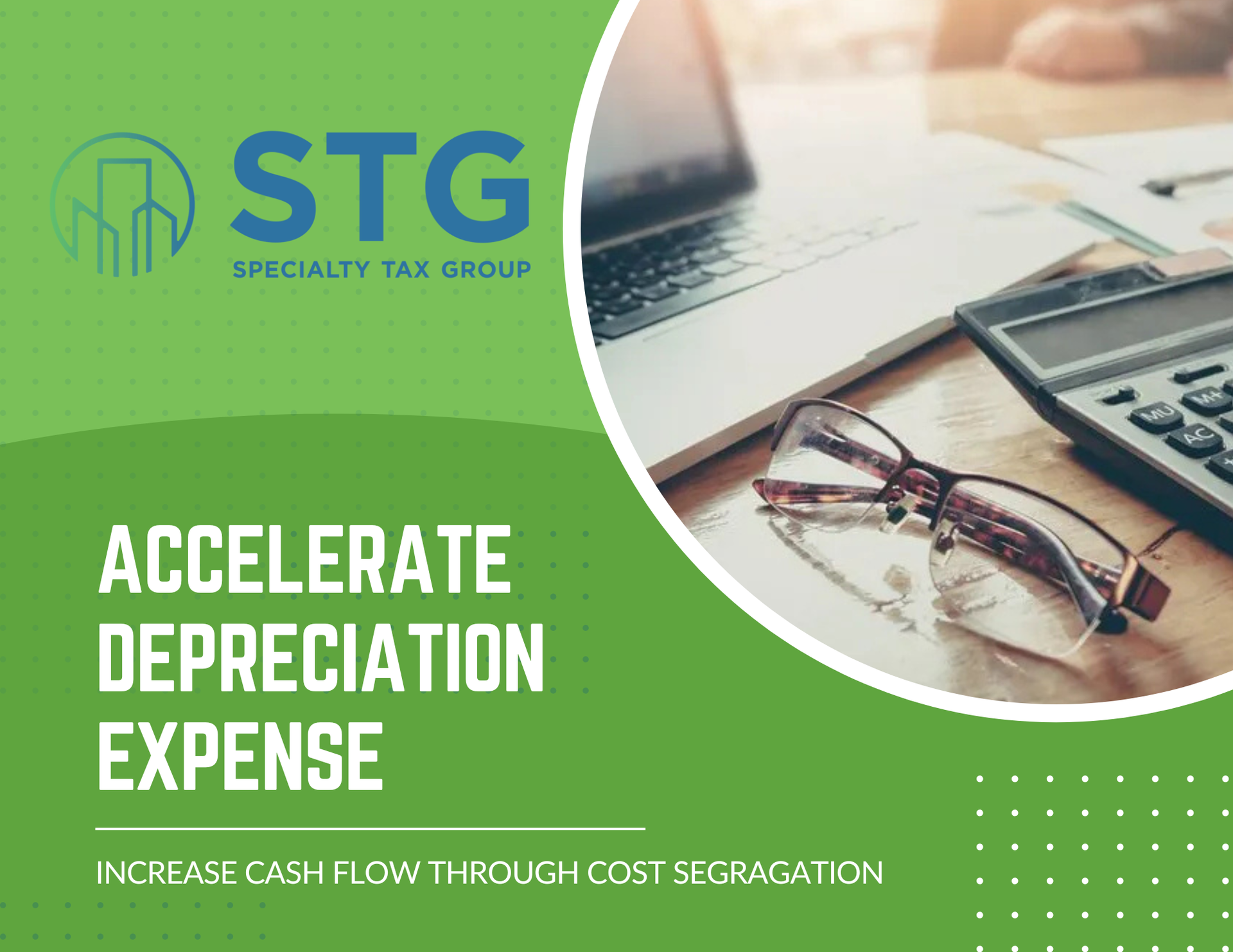This blog post has been researched, edited, and approved by John Hanning and Brian Wages. Join our newsletter below.
Key Takeaways
- Bonus depreciation is down to 40% in 2025, limiting immediate tax deductions for equipment purchases
- Section 174 R&D expenses must now be amortized over multiple years instead of being fully deductible in year one
- Strategic tax planning can help maximize deductions despite these challenging new rules
Understanding Bonus Depreciation in 2025
Bonus depreciation (Section 168(k)) allows businesses to deduct a significant portion of qualified property costs in the year of purchase rather than spreading deductions over the asset's useful life. This applies to machinery, computers, vehicles, and software with a useful life of 20 years or less.
However, this valuable tax benefit is rapidly phasing out:
| Year | Bonus Depreciation Allowed |
|---|---|
| 2023 | 80% |
| 2024 | 60% |
| 2025 | 40% |
| 2026 | 20% |
| 2027+ | 0% (unless laws change) |
What this means for 2025: If you invest $100,000 in new equipment, you can immediately deduct $40,000, but must depreciate the remaining $60,000 over several years using standard depreciation schedules. This reduction from previous years' higher percentages means less immediate tax relief and potentially tighter cash flow in the short term.
Many businesses are accelerating major purchases to capture higher deduction rates before they disappear. For optimal equipment purchasing decisions, consider reviewing our comprehensive fixed asset guide.
The New Landscape for Section 174 R&D Expenses
Section 174 governs how businesses treat research and experimental (R&E) expenses for tax purposes. These include wages, supplies, and development costs related to creating new products or processes.
The Tax Cuts and Jobs Act of 2017 dramatically changed the rules:
- Previous Rule (before 2022): Businesses could deduct 100% of R&D costs in the year incurred.
- Current Rule (2022 onward): Businesses must capitalize and amortize R&D expenses over 5 years for domestic research or 15 years for foreign research.
"The TCJA's change to Section 174 was projected to generate $119.7 billion in revenue gains between FY 2022 and 2027." (Thomson Reuters, 2024)
Example: If you spend $100,000 on U.S. R&D in 2025, you can only deduct $10,000 in the first year (using mid-year convention). The remaining $90,000 gets deducted gradually over the next 4.5 years.
This change particularly impacts tech firms, startups, and companies with significant R&D investments, stretching their deductions over years instead of providing immediate tax relief.
Bonus Depreciation vs. Section 174: Key Differences
| Feature | Bonus Depreciation | Section 174 R&D Expenses |
|---|---|---|
| Purpose | Capital investments | Research & development |
| Deduction Timing | Partial immediate deduction (40% in 2025) | 5-15 years amortization |
| Assets Covered | Equipment, software, tangible assets | Wages, supplies, software development |
| 2025 Deduction Rate | 40% upfront |
Practical Tax Planning Strategies for 2025
For Capital Asset Investments
- Consider accelerating major equipment purchases while bonus depreciation still offers 40% immediate deduction
- Conduct a comprehensive fixed asset review to identify all potential depreciation opportunities
- Balance immediate tax benefits against business cash flow needs
For R&D Expenses
- Update accounting methods and cash flow projections to reflect delayed deductions
- Continue maximizing Section 41 R&D tax credits, which remain unaffected by Section 174 changes
- These credits directly reduce tax liability and can help offset the impact of spreading R&D deductions over time
- Learn more about leveragingR&D tax credits effectively
For International Operations
- Domestic R&D (5-year amortization) receives significantly better tax treatment than foreign R&D (15-year amortization)
- Consider this tax impact when deciding where to conduct research activities
- Review international operations through anaccounting methods lens to optimize overall tax position
Potential Legislative Changes
The tax landscape remains fluid. Several legislative efforts have aimed to restore more favorable R&D expense treatment:
- The House Budget Committee's FY 2025 plan points toward potential tax relief that could include restoring full R&D expensing
- The Tax Relief for American Families and Workers Act of 2024 would have deferred R&D amortization requirements, but stalled in the Senate
"The [TCJA] of 2017 included a provision requiring businesses to amortize R&D costs over five years for domestic expenses and 15 years for foreign expenses, effective from tax year 2022." (Thomson Reuters, 2024)
Given this uncertainty, businesses should plan for current rules while staying informed about potential changes that could offer relief.
Potential Tax Law Changes
On May 13, the House Ways & Means Committee advanced what’s being called the “One Big Beautiful Bill” — and hidden within its 389 pages are five tax provisions that could significantly boost cash flow for businesses, real estate investors, and developers.
At Specialty Tax Group, we’re closely monitoring this proposed legislation. While it still has a long road ahead before becoming law, we believe it’s critical to start preparing now.
Here’s a sneak peek at what this bill could unlock:
- 100% Bonus Depreciation (Retroactive!)
- Full Expensing for Domestic R&D
- Enhanced §179D Deductions
- Final Year for §45L Credits
- Opportunity Zones 2.0
These are potential game-changers for cost segregation, energy credits, and R&D planning—but timing and proactive strategy will be everything.
Where We Stand:
This bill has passed committee but must still survive the full legislative process—including debates, amendments, and votes in both chambers. Nothing is final yet, but savvy companies are already modeling scenarios and planning for fast execution if and when it passes.
Conclusion
The 2025 tax landscape presents significant challenges for businesses investing in equipment or conducting R&D. With bonus depreciation dropping to 40% and R&D expenses subject to multi-year amortization, proactive tax planning is more critical than ever.
By understanding these changes and implementing strategic approaches to timing purchases and documenting research activities, businesses can still maximize available tax benefits while maintaining healthy cash flow. Regular consultation with tax professionals will help ensure your business adapts effectively to this evolving tax environment.
For a personalized tax strategy assessment,
contact our team today.
2024 Tax Guide





